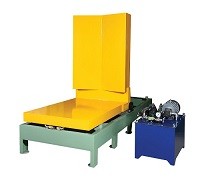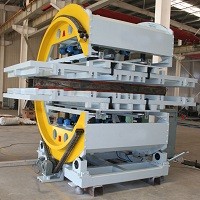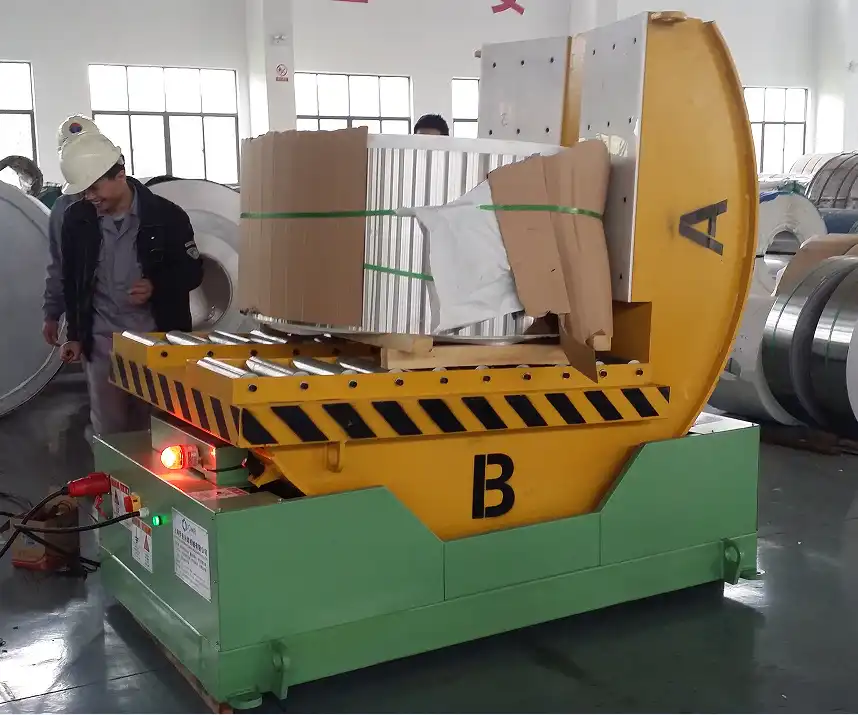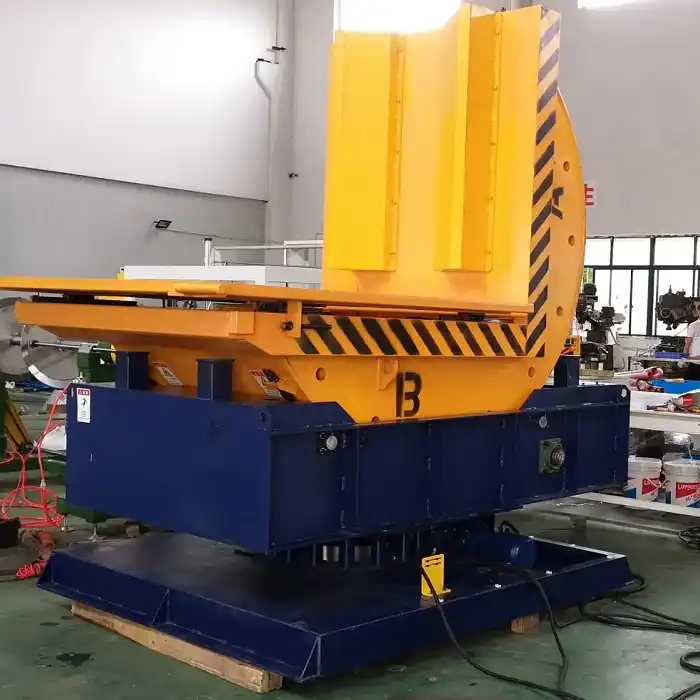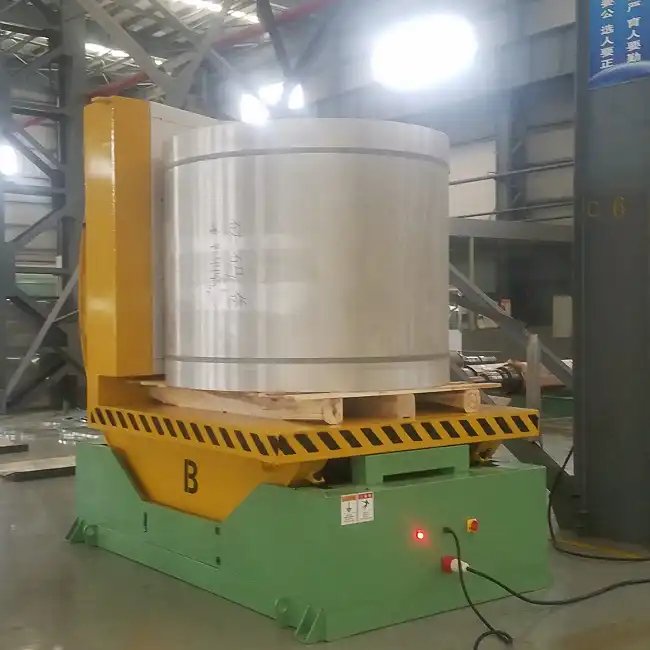Optimizing Heavy Coil Handling: Integrating Conveyors and Coil Tilters
Handling heavy metal coils efficiently and safely is a critical challenge in many metal fabrication and processing operations. Manual handling poses significant risks, while inefficient processes can create bottlenecks. An integrated system combining industrial conveyors and coil tilters (also known as upenders) offers a robust solution for automating and streamlining coil repositioning and transport.
Understanding the Components
Various types of tilters and upenders are available to handle different loads, materials, and application requirements:
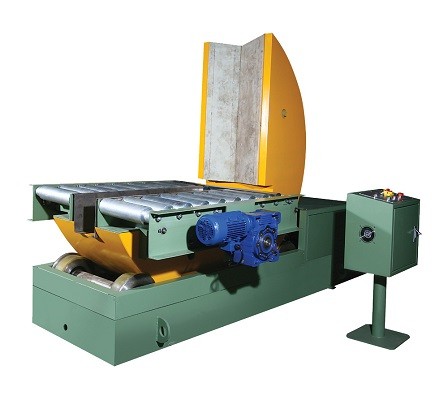 | 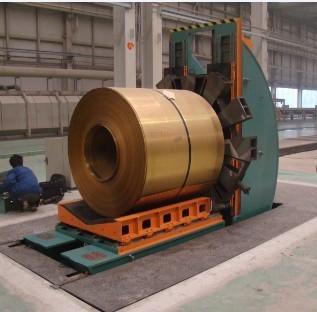 |
Mould Tilter & Upender | Coil Tilter& Upender |
 |  |
Coil Upender/tilter | Spool/Drum Tilter |
|
|
Hydraulic Upender/Tilter | Load Inverters |
- Coil Tilters/Upenders: These specialized machines are designed to safely rotate heavy cylindrical objects, primarily metal coils, typically by 90 degrees. They change the coil's orientation from eye-to-sky (vertical bore) to eye-to-horizon (horizontal bore), or vice versa. This is essential for transitioning coils between storage, transport, and processing stages.
- Industrial Conveyors: Conveyor systems provide the automated transport mechanism. For heavy coil handling, robust types like chain conveyors or heavy-duty roller conveyors are commonly used. They move coils reliably from one point to another within the facility.
The Synergy: How Integrated Systems Work
Combining coil tilters with conveyors creates a seamless automated handling process:
- Loading: Coils are typically loaded onto the conveyor system (often via forklift or crane) in their initial orientation (e.g., eye-to-sky).
- Transport: The conveyor moves the coil to the tilting station.
- Tilting/Upending: The coil moves onto the tilter platform. The tilter then rotates the coil to the required orientation (e.g., eye-to-horizon).
- Offloading/Further Transport: The reoriented coil is transferred from the tilter onto an outbound conveyor section, ready for the next process step (e.g., feeding a slitting line, strapping, wrapping, or moving to storage).

steel coil upender Key Benefits of Integrated Coil Tilter Conveyor Systems
Implementing an integrated system offers significant advantages:
- Enhanced Safety: Dramatically reduces the need for manual handling or complex maneuvers with cranes and forklifts, minimizing the risk of accidents and injuries. Adhering to safe material handling practices is paramount [Example authoritative source on safety could be linked here, e.g., OSHA].
- Improved Efficiency: Automates the repositioning and transport process, leading to faster cycle times, increased throughput, and reduced labor requirements.
- Reduced Product Damage: Gentle, controlled movements prevent damage to coils (e.g., edge damage, telescoping) that can occur during manual handling.
- Optimized Workflow: Creates a smooth, predictable flow of materials, integrating seamlessly with upstream and downstream processes.
- Space Savings: Can often be designed more compactly than areas required for manual maneuvering with mobile equipment.
Design Considerations for Implementation
When specifying or designing a coil tilter conveyor system, several factors are crucial:
- Load Capacity: System must be rated for the maximum weight and dimensions (diameter, width) of the coils being handled.
- Tilting Mechanism: Hydraulic or electromechanical, depending on speed, duty cycle, and load requirements. Tilting angle (usually 90°, but others possible).
- Conveyor Specifications: Type (chain, roller), width, load rating per section, speed (fixed or variable), and durability for the operating environment.
- Controls and Automation: Level of automation required, PLC integration, sensor types (photo-eyes, proximity sensors), safety interlocks, and user interface (HMI).
- Safety Features: Emergency stops, physical guarding, light curtains, load presence sensors, and interlocking gates are essential.
- Layout and Integration: Footprint constraints, interface points with other equipment, and overall facility flow.
- Maintenance Access: Designing for ease of maintenance minimizes downtime.

rotating coil upender Applications in Metal Fabrication and Processing
Integrated coil tilter and conveyor systems are vital in various sectors:
- Steel Service Centers: Receiving coils, preparing them for slitting, cut-to-length lines, or storage.
- Stamping Operations: Orienting coils correctly for feeding into stamping presses.
- Roll Forming Lines: Positioning coils for entry into the roll former.
- Tube and Pipe Mills: Handling master coils before slitting and forming.
- Automotive Manufacturing: Supplying coils to press lines and other forming operations.

upender Conclusion
Integrating coil tilters with conveyor systems provides a powerful solution for automating the handling of heavy coils in demanding industrial environments. By prioritizing safety, efficiency, and careful design considerations, fabrication and processing facilities can significantly improve their material handling operations, reduce risks, and boost overall productivity. This technology is a key enabler for modern, efficient metal processing workflows.
